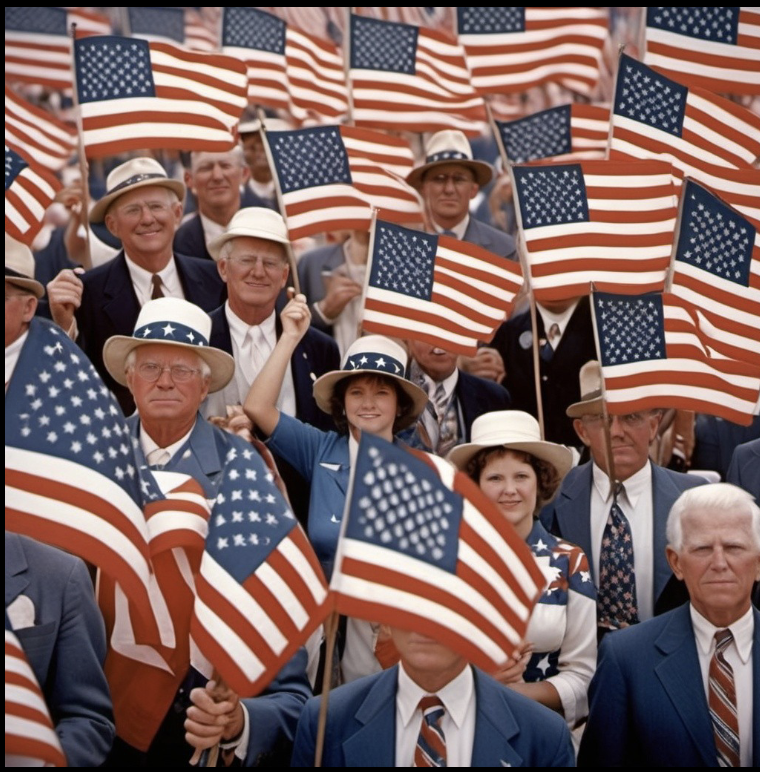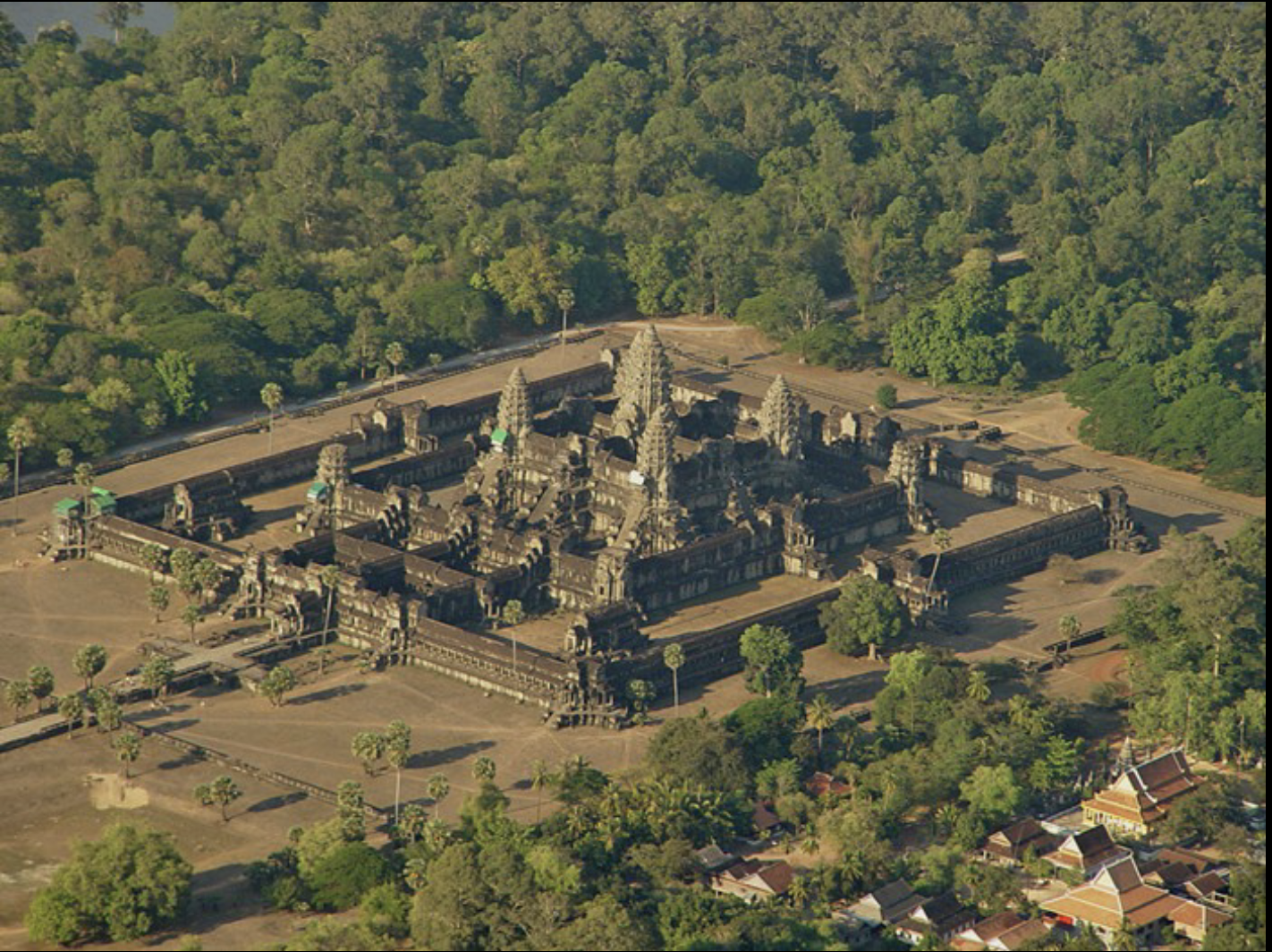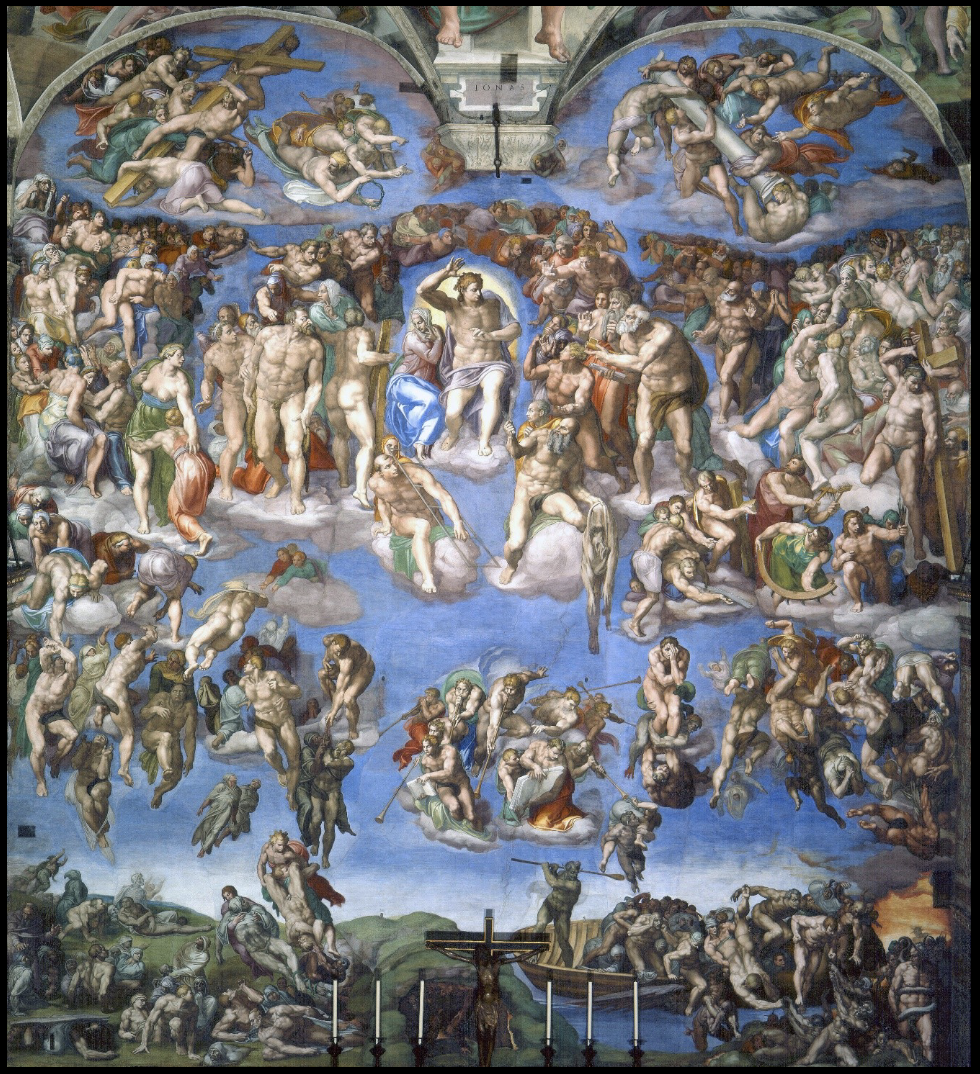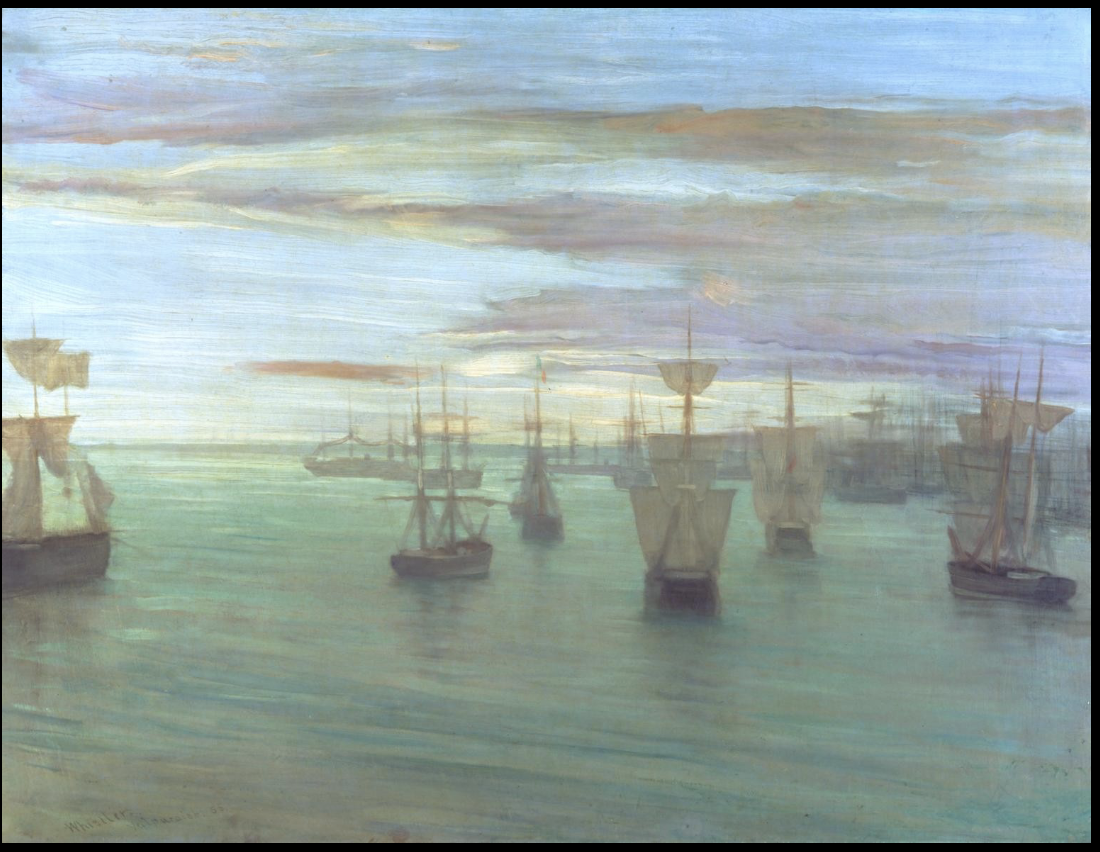Global Arts Final Flashcards
1/45
There's no tags or description
Looks like no tags are added yet.
Name | Mastery | Learn | Test | Matching | Spaced |
|---|
No study sessions yet.
46 Terms
Stable Diffusion, “Photograph of patriotic Americans”, 2024


Ancient Roman, Column of Trajan, 107-113

Khmer Empire,, Angkor wat, 1150

Pinturiccio, The Ressurection of Christ, 1492

Anthony Lambert, Let every one take care of himself, 1833
Library of Congress description:
“A satire attacking Andrew Jackson’s plan to
distribute treasury funds, formerly kept in the
Bank of the United States, among ‘branch
banks’ in various states. The artist also alleges
Vice-President Van Buren’s manipulation of
administration fiscal policy. Jackson appears as
a jack-ass ‘dancing among the Chickens’ (the
branch banks) to the alarm of the hen ‘U.S.
Bank.’ Martin Van Buren, as a fox, and Jack
Downing, as a cock, look on. On the left sit
five chained dogs, representing the ‘Albany
Argus, Journal of Commerce,’ and other
newspapers sympathetic to Jackson’s program.
In the left foreground a sow with the head of
Jackson advisor Francis Preston Blair lies on a
copy of his newspaper, the ‘Globe.’ Jack
Downing: ‘Yankee doodle doodle doo!’
Jackson: ‘Sing away Major Downing. This is a
capital Experiment by the Eternal!’ Dogs: ‘He
looks like a "Lion!’ How dignified! What
‘correct’ Steps! in such ‘good time!’ Can any
thing equal him! The ‘greatest’ and ‘best’ Ass
we ever knew!’ Blair: ‘I feel quite at home on
this dung heap.’ Van Buren: ‘Sly’ is the
word!’”

Thomas Nast, The third term panic, 1874
“Illustration shows a braying ass in a lion’s
coat and ‘N.Y. Herald’ collar frightening
animals in the forest. A giraffe (N. Y. Tribune),
a unicorn (N.Y. Times), and an owl (New York
World) represent newspapers and an ostrich
with its head buried represents ‘Temperance.’
An elephant, ‘The Republican Party,’ stands
near broken planks (Inflation, Repudiation,
Home Rule, and Re-construction) over a pit
labeled ‘Southern Claims. Chaos. Rum.’ A fox
(Democratic Party) has its forepaws on the
plank ‘Reform.’ (Tammany. K.K.) The title
refers to U.S. Grant’s possible bid for a third
presidential term which was criticized by N.Y.
Herald owner and editor James Gordon
Bennett, Jr.

Alcat Cast Stone Art, Chespake Bay watermen, Jesus, Donald J trump, and sally Thompkins, 2024

Civic Crafted LLC, The Resolute Desk, 2024

Victoria Cassinova, Freedom, 2024
“This image of Vice President Kamala Harris is
about reclaiming freedom. I am using art to show
that we all must cast ballots to have the freedom
to live, vote, read, love, speak and believe in a
way that is authentic to ourselves, and be safe
from harm, hate and persecution.”

Emperor Huizong, Finches and Bamboo, 1100

Guo Xi, Early Spring, 1072
Why does a virtuous man take delight in
landscapes? It is for these reasons: that in a rustic
retreat he may nourish his nature; that amid the
carefree play of streams and rocks, he may take
delight; that he may constantly meet in the
country fishermen, wood-cutters, and hermits,
and see the soaring of cranes, and hear the crying
of monkeys. The din of the dusty world and the
locked-in-ness of human habitations are what
human nature habitually abhors; while, on the
contrary, haze, mist, and the haunting spirits of
the mountains are what human nature seeks, and
yet can rarely find. When, however, in the hey-
day of great peace and prosperity, the minds,
both of a man’s sovereign and of his parents, are
full of high expectations of his services, should
he still stand aloof, neglecting the
responsibilities of honor and righteousness. In
the face of such duties the benevolent man
cannot seclude himself and shun the world.”
“How delightful then to have a landscape
painted by a skilled hand! Without leaving the
room, at once, he finds himself among the
streams and ravines; the cries of the birds and
monkeys are faintly audible to his senses; light
on the hills and reflection on the water,
glittering, dazzle his eyes. Does not such a
scene satisfy his mind and captivate his heart?
That is why the world values the true
significance of the painting of mountains.”
“A great mountain is so stately that it
becomes the master of multitudinous others
arranged about it in order. It becomes the great
master of the hills and slopes, forests and
valleys, far and near, small and large. Its
appearance is that of an emperor sitting
majestically in all his glory, accepting the
service of and giving audience to his subjects,
without sign of arrogance or haughtiness.
A tall pine tree is so stately that it becomes
a leader amongst the other trees. It stretches
out accordingly over vines and creepers, grass
and trees, a leader for those who are unable to
support themselves. Its state is like that of a
prince who wins the approval of his age and
receives the services of lesser people, without
sign of anxiety or vexation.”
“In painting a landscape attention must first
be given to the large mountain which may be
called the master peak. When this is decided
upon, other details come next: the perspective
and proportion should be worked out in
relation to the master peak, which will
dominate the whole region—that is why it is
called the master peak. Figuratively speaking,
its relation to the others should be than of an
emperor to his subjects, a master to his
servants.”

Fan Kuan, Travelers Among streams and mountains, 1000

Yang Yongliang, Artificial Wonderland II- travelers among streams and mountains, 2014

Michelangelo, The last Judgement, 1535
Pietro Aretino, author and critic:
“As a baptized Christian, I blush before
the license . . . which you have used in
expressing ideas connected with the
highest aims and final ends to which our
faith aspires. . . Here there comes a
Christian, who . . . deems it a royal
spectacle to portray martyrs and virgins
in improper attitudes, to show men
dragged down by their shame, before
which things houses of ill-fame would
shut the eyes in order not to see them.”
Biagio de Cesena, Papal official:
“It was most disgraceful that in so
sacred a place there should have been
depicted all those nude figures, exposing
themselves so shamefully, and that it
was no work for a papal chapel but
rather for the public baths and taverns.

Protestant Reformation, begun in the 16th century
(1500s):
Movement to reform Christianity by challenging
the perceived corruption and power of the Pope
and the Roman Catholic Church.
• Although there were earlier efforts to reform the
church, the Protestant Reformation of the 16th
century created a major schism in Christianity, led
by the German priest, theologian, and writer
Martin Luther (1483-1546) with his Ninety-five
Theses of 1517, disputing various beliefs and
practices of the Catholic Church, including the
doctrine of transubstantiation (which asserted that
bread and wine of the Eucharist sacrament at
Mass becomes the body and blood of Christ) and
the selling of indulgences (certificates for reduced
moral punishment, a kind of license to sin).
• Protestants also objected to the public display of
religious images as a form of idolatry, even
though pictures had long played an important role
in educating illiterate people about the stories of
the Bible. The Catholic Church believed that
images also encouraged proper veneration of holy
figures, but Protestants felt this led to
inappropriate worship of the images themselves.
The council of trent
A series of meetings held in northern Italy by the Catholic Church to clarify religious doctrine as well as to define and
condemn heresies, including the Protestant Reformation (led by Luther). The Council thus embodied a movement within the
Catholic Church known as the Counter Reformation. In its final session, the Council of provided guidelines to artists
no unusual imagery unless approved
Annibale Carracci, The dead christ mourned, 1604


Bernado Bitti, Coronation of the virgin, 1575

Baroque art of the reformation
Baroque art of the Counter Reformation
• Art created to counteract the Protestant Reformation and spread
Catholicism by persuading Christians to embrace the Catholic
Church; such art reasserted the legitimate role of art in
visualizing Biblical stories – a role that Protestantism had
challenged.
• To be persuasive, Baroque art adhered to the guidelines for
artists articulated by the Council of Trent requiring clarity,
decorum, avoidance of obscenity or lasciviousness, etc.
• By thus propagating the “true” faith, Baroque art was consistent
with Papal “propaganda” – a term used in the early 1600s to
describe official instructions about proper spiritual observance
and missionary evangelization by the Church’s Sacred
Congregation for the Propagation of the Faith.
Paolo Veronese, The feast in the House of Levi, 1573
Showed drunken and absurdieties, Paolo forced to make corrections to the paintings by the inquisitions.

Emperor Jahangir: “As these animals appeared to me to be
very strange, I both described them and ordered that painters
should draw them in the Jahangir-nama [Book of Jahangir,
the emperor’s memoirs] so that the amazement that arose
from hearing of them might be increased. One of these
animals in body is larger than a peahen and smaller than a
peacock. When it is in heat and displays itself, it spreads out
its feathers like the peacock and dances about. Its beak and
legs are like those of a cock. Its head and neck and the part
under the throat are every minute of a different color. When
it is in heat it is quite red—one might say it had adorned
itself with red coral—and after a while it becomes white in
the same places and looks like cotton. It sometimes looks of
a turquoise color. Like a chameleon it constantly changes
color.”
TurkeyBichit
Bichitr, Jahangir Prefering Sufi Sheikh to Kings, 1615
King james I

Ustad Ahmad Lahori, Taj Mahal, 1632
Tombs of Emperor Shah Jahan and Mumtaz Mahal

Thomas Jefferson to James Madison, September 20, 1785: “How is a taste in this beautiful
art to be formed in our countrymen, unless we avail ourselves of every occasion when
public buildings are to be erected, of presenting to them models for their study and
imitation?”
Virginia state capital and Maison Carree
JAcques Louis David, The Oath of the Tennis Court, 1791

Jacques Louis David, Death of Murat, 1793
Similar to Michelagelo, Pieta, and Carravaggio The entombment of Christ,
Also paintd Napoleon Crossing the Alps

Similar to Napoleon
French Artist, Toussaint L’Ouverture, 1802
Whistler’s “Ten O’Clock,” 1878
Nature contains the elements of color and form of all pictures – as the
keyboard contains the notes of all music –
but the artist is born to pick, and choose, and group with science, these
elements, that the result may be beautiful – as the musician gathers his
notes, and forms his chords, until he brings forth from chaos, glorious
harmony. –
To say to the painter, that nature is to be taken, as she is, is to say to
the player, that he may sit on the piano! –
That Nature is always right, is an assertion, artistically, as untrue, as it is
one whose truth is universally taken for granted – Nature is very rarely
right, to such an extent even, that it might almost be said that Nature is
usually wrong – that is to say – the condition of things that shall bring
about the perfection of harmony worthy a picture, is rare, and not
common at all…
James McNeill Whistler, Crepuscule in Flesh Color and Green: Valparaiso, 1866

walker Evans, Coal Dock Worker, 1933

Los Carpinteros, Horno De Cabon, 1998

George Catlin, Floyd’s Grave: where Lewis and Clark Buried Seargent Floyd in 1804, 1832
I landed my canoe in front of this grass-covered mound, and all hands
being fatigued, we encamped a couple of days at its base. I several
times ascended it and sat upon his grave, overgrown with grass and
the most delicate wild flowers, where I sat and contemplated the
solitude and stillness of this tenanted mound; and beheld from its top,
the windings infinite of the Missouri, and its thousand hills and domes
of green, vanishing into blue in distance, when nought but the soft-
breathing winds were heard, to break the stillness and quietude of the
scene. Where not the chirping of bird or sound of cricket, nor soaring
eagle’s scream, were interposed ’tween God and man; nor aught to
check man’s whole surrender of his soul to his Creator. I could not hunt
upon this ground, but I roamed from hill-top to hill-top, and culled
wild flowers, and looked into the valley below me, both up the river
and down, and contemplated the thousand hills and dales that are
now carpeted with green, streaked as they will be, with the plough,
and yellow with the harvest sheaf; spotted with lowing kine–with
houses and fences, and groups of hamlets and villas–and these lovely
hill-tops ringing with the giddy din and maze, or secret earnest
whispers of lovesick swains–of pristine simplicity and virtue–
wholesome and well-earned contentment and abundance–and again,
of wealth and refinements–of idleness and luxury–of vice and its
deformities–of fire and sword, and the vengeance of offended Heaven,
wreaked in retributive destruction!--and peace, and quiet, and
loveliness, and silence, dwelling again, over and through these scenes,
and blending them into futurity!

Grant Wood, Death on the Ridge Road, 1935

,cara Romero, Oil Boom, 2015

Cannupa Hanska Luger,This is not a snake / The one who checks & the one who balances, 2017
A monumental sculptural installation in evolution, unfurling a grotesquely poignant winding tapestry of waste; combining the leftovers of extractive industry and capitalist exports with handcrafted ceramic, steel and fiber elements to represent industrial exploitation of Indigenous land and its minerals.

Jeffery Gibson, The space in which to place me”, 2023

Jeffery Gibson, We hold these truths to be self-evident, 2023
About Freedom,

Jeffery Gibson, She Never Dances Alone, 2023

Jeffery Gibson, “I’m A Natural Man”, 2023
n this case highlights the long hair worn by Native American men and boys that was forcibly cut short during Indian boarding school confinement

Pablo Delano, The Museum of the old colony, 2023

Pablo Delano, The Museum of the old colony, 2023

Henri Matisse, La Dance, 1910

Transubstantiation
The belief that the bread and wine transform into the body and blood of Christ during Mass.
Joseph M.W. Turner. VEsuvius in Eruption, 1817-1820
Burke: Astonishment is the effect of the sublimein its highest degree, the inferior effects are admiration, reverence, and respect. a state of the mind hwere all other thoughts are suspended and the mind is filled with the object

Edward Burtynsky, Oil Spill #13 Mississippi Delta Gulf of Mexico, 2010
